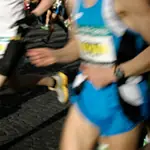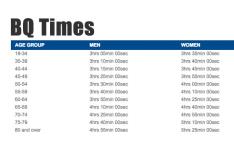Full Rest vs. Active Rest Recovery
Former world marathon record holder and Olympic 10,000m silver medalist Paul Tergat viewed his marathon race as the “beginning of my rest.” For Tergat, 10 to 12 days of complete rest post-marathon—both physical and mental—with no running whatsoever was something he commonly addressed as both “intelligent and needed”—even with another key event soon on the horizon. Tergat also adopted the unique perspective that these rest periods were part of his training, not the absence of it.
Is Tergat’s “complete rest sequence” post-marathon strategy the most intelligent for those looking at another in 3 to 4 weeks? And is it the proper path for recovery and introduction to your next sequence? History, research and a cross section of even the best global runners suggests that optimum recovery from a marathon in a short period depends on a variety of important factors, not the least of which is how much you run.
Newer Runners vs. Salty Veterans
The 21st century running boom—also known as running boom 2.0—is one of far greater total participation than the Bill Rodgers and Frank Shorter-led era of a generation ago. And while road racing is now seeing three-fold more participation, we are also increasingly seeing runners contesting events such as half marathons and marathons on lighter loads of training. Here at ZAP Fitness we are commonly hosting summer adult campers who have entered marathon events on as little as 15 to 20 miles a week.
Paradoxically, it is for these “new” runners that I recommend a more active rest period with movement, non-running exercise and a more rapid ramp back into “normal training” in the weeks post-marathon than those with larger volumes of training background—folks who can draw upon their long term fitness more readily after a rest.
Moreover, this “active rest” approach is the key for those looking to complete 2 to 3 longer races in short order. The general thinking here is simple: If you have trained more frequently and over a longer period of time, both in terms of quantity and quality, you need ample rest. For those with less background, the horse should be remounted more quickly to continue the much-needed aerobic development over the long term.
Newer Runners vs. Salty Veterans
The 21st century running boom—also known as running boom 2.0—is one of far greater total participation than the Bill Rodgers and Frank Shorter-led era of a generation ago. And while road racing is now seeing three-fold more participation, we are also increasingly seeing runners contesting events such as half marathons and marathons on lighter loads of training. Here at ZAP Fitness we are commonly hosting summer adult campers who have entered marathon events on as little as 15 to 20 miles a week.
Paradoxically, it is for these “new” runners that I recommend a more active rest period with movement, non-running exercise and a more rapid ramp back into “normal training” in the weeks post-marathon than those with larger volumes of training background—folks who can draw upon their long term fitness more readily after a rest.
Moreover, this “active rest” approach is the key for those looking to complete 2 to 3 longer races in short order. The general thinking here is simple: If you have trained more frequently and over a longer period of time, both in terms of quantity and quality, you need ample rest. For those with less background, the horse should be remounted more quickly to continue the much-needed aerobic development over the long term.
The First Marathon Can Be a Springboard
It may come as a surprise to many that successful marathon efforts in a short time window are not terribly unusual and were far more common amongst competitive runners a generation ago. For those who were able to recover more readily in the first few weeks, another marathon was (and can be now) an effective, albeit risky, way to move forward.
The first marathon, itself, if recovered from properly, can and will serve as an excellent fitness boost toward the second. Once again, the challenge inherently is the first 14 to 17 days where intensity should be kept to a minimum and overall volume should be reduced considerably as well.
On a related “two marathon” note is the concept of the “practice marathon” within a build-up, from which recovering is a simpler task. A practice marathon is simply a marathon used as one of the critical long runs as you build toward the more important primary goal race. Increasingly, I have become a fan of running a “practice” marathon 4 to 6 weeks out from a marathon—if for no other reason than to practice race day scenarios and fluid intake.
The Individualized Nature of Recovery
Much like event preparation itself, recovery is as uniquely individual as a fingerprint. Different body types, different training backgrounds and lifestyles, as well as fitness within the cycle—and even a runner’s nutritional regimen—all play critical roles when it comes to marathon recovery. In the end, listening to your body is the best recipe for recovery and moving toward your next goals.
Do not fight rest. Rest is a part of training. Conversely, if your body utilizes the fitness attained from your marathon and you have recovered well in the first few weeks, be open to the idea of a springboard into another event sooner than might be considered “usual.”
Connect with us on Twitter, Facebook, Instagram or Pinterest for more tips, recipes and ideas to fuel your ACTIVE life.
 Find your next race.
Find your next race.
- 2
- of
- 2
About the Author

Get ACTIVE on the Go


Couch to 5K®
The best way to get new runners off the couch and across the finish line of their first 5K.
Available for iOS | Android







Discuss This Article